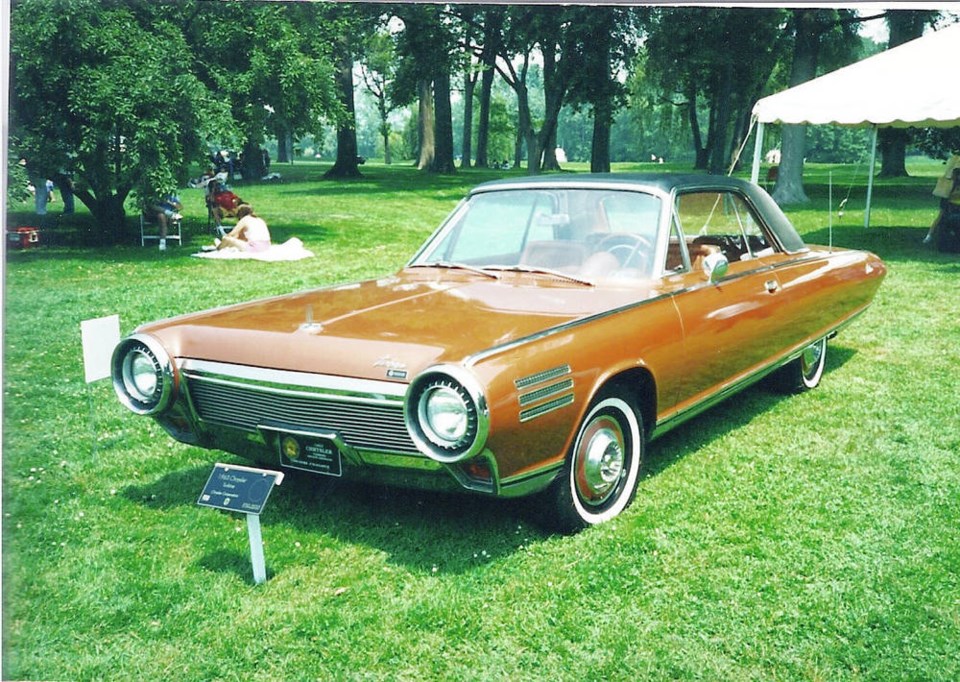Gas turbines develop power in one smooth continuous stream, a far more elegant process than the reciprocating motion of pistons starting and stopping thousands of times per minute.
Other turbine advantages over internal combustion engines are fewer parts, no cooling system, lighter weight and the ability to burn practically any fuel. It’s no wonder they have long fascinated automotive engineers.
Automotive gas turbines should not be confused with pure jet engines which propel airplanes by the thrust of expelled gas. While the operating principle is the same, a car’s turbine, like a piston engine, rotates a shaft geared to the vehicle’s driveline.
Turbine pioneer Dr. Sanford Moss of General Electric began experimenting with gas turbines early in the twentieth century. There were already wind, water and steam turbines but energising a turbine by burning the fuel directly was new.
In the 1920s Dr. Moss turned his attention to related exhaust actuated turbine-driven superchargers, called turbochargers, that enabled aircraft piston engines to maintain sea level performance at high altitudes. For Moss’s success he became known as the “Father of Turbocharging.”
Moss and Chrysler Corp. experimental engineer George Huebner met in the mid-1930s during a demonstration of a turbocharged Chrysler experimental car. They also discussed pure turbines and Moss urged Huebner and Chrysler to pursue a turbine car engine. Such high level encouragement could not be ignored.
During the Second World War Chrysler designed an ingenious V-16 aircraft engine that used its exhaust gases to spin a turbine that fed power back to the engine’s crankshaft. The war ended before production began but it led to a military contract for Chrysler to develop a turbine “prop-jet” aircraft engine. When the project ended in 1949 Chrysler’s turbine had achieved fuel economy almost competitive with aircraft piston engines.
Chrysler began pursuing automobile turbines in 1950. It wasn’t the only car company doing so. Others such as Rover in England and Renault in France were also developing turbine cars.
Chrysler unveiled an experimental Plymouth in 1954 with the corporation’s first generation gas turbine engine. Its engineers had made progress in alleviating two of the knottiest automobile turbine problems: high exhaust temperature and poor fuel economy.
It turned out the two were related. By passing the exhaust gas through a heat exchanger (like a radiator) which reduced its temperature significantly, then using the recovered heat to raise the temperature of the incoming air, it decreased the amount of fuel required to heat the air. Heat exchangers became an essential component of automotive gas turbines.
The second Plymouth turbine, a 1955, was used for engineering evaluation only, but the third, a ‘56 Plymouth, made history by becoming the first turbine-powered automobile driven across the continent.
It left New York City on March 26, 1956 and arrived at the Los Angeles City Hall four days later, covering 3,020 miles (4,862 km). In varied terrain and weather it averaged 16 miles per gallon on a mixture of unleaded gasoline and diesel oil.
The cross-country car had the same basic turbine as the first prototype as engineers kept refining each succeeding experimental vehicle, particularly in burner efficiency and heat recovery.
Chrysler also made significant progress in developing less expensive materials to replace the exotic metals in components like combustion chambers, turbine wheels and blades. The cost of materials was less serious for aircraft but more critical for mass produced passenger car engines that needed readily available, reasonably priced components.
Much of the turbine’s initial acceleration lag and lack of engine braking was eliminated by developing variable nozzles that changed the angle the gases hit the turbine wheel. A vertical twin-disc rotating heat exchanger captured exhaust heat more efficiently.
After another coast-to-coast run, Chrysler wanted real world turbine experience in the hands of typical motorists. For this experiment, Chrysler developed a new body style that looked remarkably like a Thunderbird, not surprising since Chrysler’s styling chief Elwood Engle had recently arrived from the Ford Motor Company. Bodies built by Ghia of Italy were mated to their chassis in Detroit at the rate of about one per week.
Between 1964 and 1966 Chrysler passed its 50-car turbine fleet through the hands of 203 randomly chosen ordinary drivers who accumulated 1.1.million miles (1.7 million kilometres).
By the later part of the test, reliability had improved to where average out-of-service time was only one per cent, a remarkable achievement for a new type of engine. Driver comments were generally favourable, the outstanding feature noted being the engine’s extreme smoothness.
Chrysler continued turbine development until about 1980 but didn’t come close to replacing the very entrenched, very good and constantly improving piston engine. Of more immediate concern for Chrysler by then was simply surviving as a corporation.
Thus ended Chrysler’s brave experiment with the gas turbine powered automobile.



